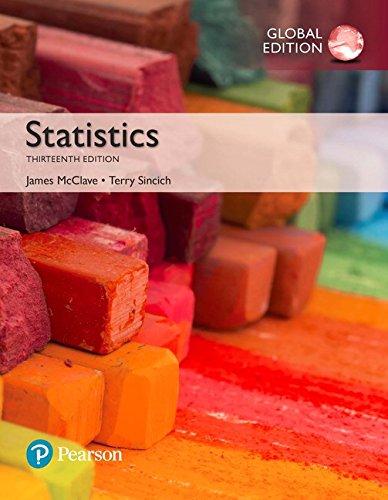A botanist conducted an experiment to study the growth of carnations as a function of the temperature
Question:
A botanist conducted an experiment to study the growth of carnations as a function of the temperature x1 1°F2 in a greenhouse and the amount of fertilizer x2 [kilograms (kg)
per plot] applied to the soil. Twenty-seven plots of equal size were treated with fertilizer in amounts varying between 50 and 60 kg per plot and were mechanically kept at constant temperatures between 80 and 100°F. Small carnation plants [approximately 15 centimeters
(cm) in height] were planted in each plot, and their height y (cm) was measured after a sixweek growing period. The resulting data are shown in Table 12.5.
Analyzing a Complete Second-order Model—Carnation Growth Data Example 12.12 Table 12.5 Temperature (x1), Amount of Fertilizer (x2), and Height (y) of Carnations x1 x2 y x1 x2 y x1 x2 y 80 50 50.8 90 50 63.4 100 50 46.6 80 50 50.7 90 50 61.6 100 50 49.1 80 50 49.4 90 50 63.4 100 50 46.4 80 55 93.7 90 55 93.8 100 55 69.8 80 55 90.9 90 55 92.1 100 55 72.5 80 55 90.9 90 55 97.4 100 55 73.2 80 60 74.5 90 60 70.9 100 60 38.7 80 60 73.0 90 60 68.8 100 60 42.5 80 60 71.2 90 60 71.3 100 60 41.4
a. Fit a complete second-order model to the data.
b. Sketch the fitted model in three dimensions.
c. Do the data provide sufficient evidence to indicate that the second-order terms b3, b4, and b5 contribute information relevant to the prediction of y?
Step by Step Answer:





